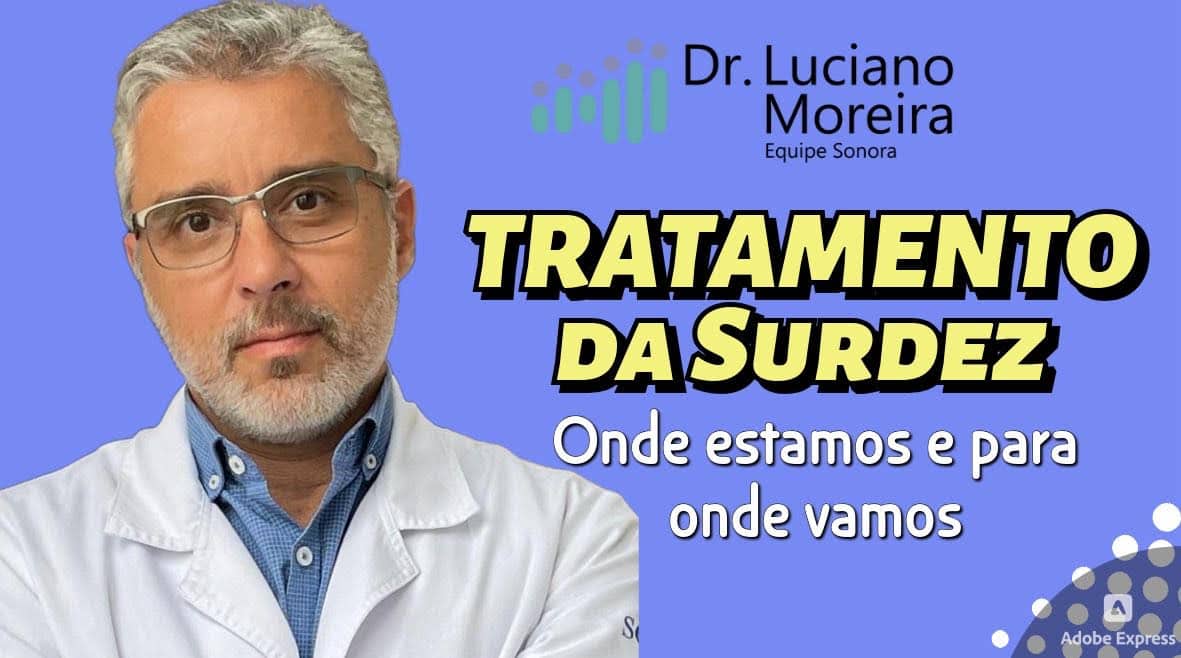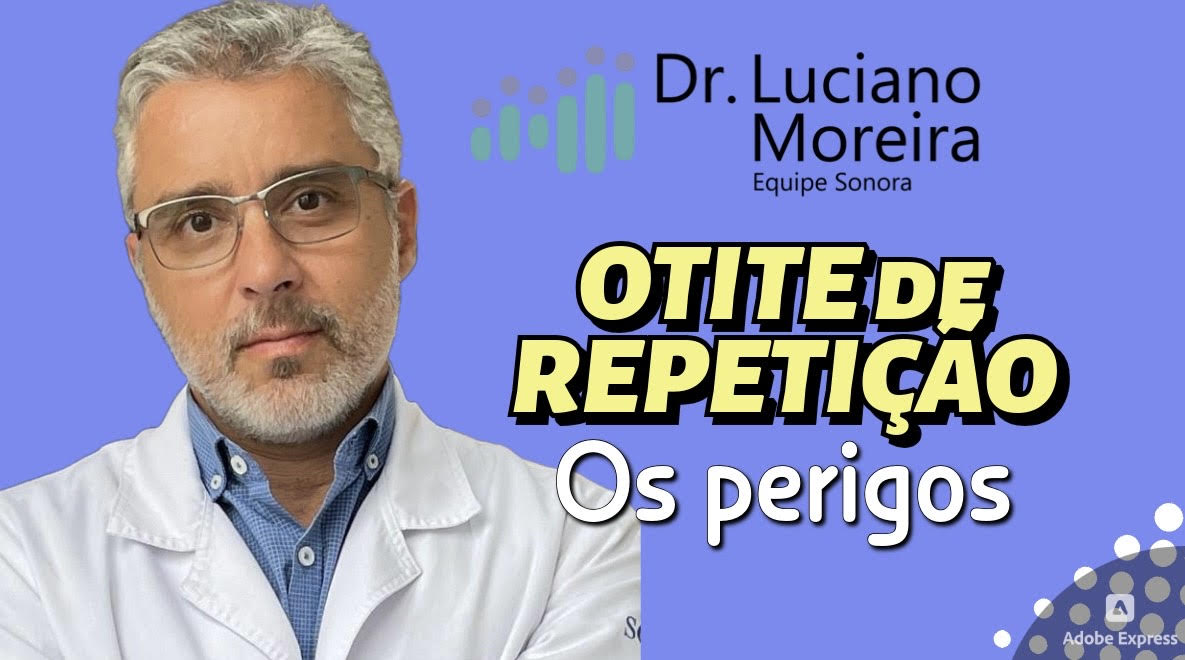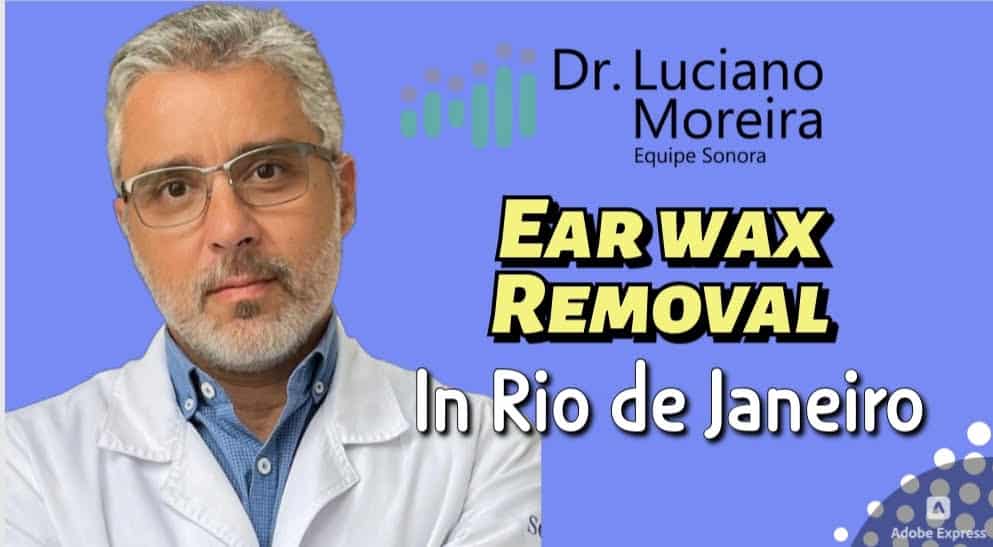Tinnitus is the perception of sound in the ears or head in the absence of a corresponding external sound source. It is fundamental to understand that tinnitus is not a disease in itself, but rather a symptom, a sign that something may be altered in the auditory system or other parts of the body. The perceived sounds vary greatly among people, and can be described as a whistle, hiss, cicada, waterfall, pressure cooker, doorbell, buzzing, clicks, pulsatile sound, or other noises. The intensity and frequency of the sound can also vary, and it may be perceived in one or both ears, or even seem to originate inside the head.
This symptom is extremely common, affecting a significant portion of the global population, with estimates ranging between 10% and 15% of adults. In Brazil, it is estimated that between 25 and 28 million people live with tinnitus. Although it can occur at any age, including in children, the prevalence increases with aging, being more frequent in the elderly, often associated with age-related hearing loss.
If you have tinnitus whose CAUSE is hearing loss you can read this ebook created by Paula Pfeifer, from The Hearing Loss Club. Paula has had tinnitus caused by sensorineural hearing loss for 40 years, and gives great tips on how to manage tinnitus and the way you react to it.
To better understand and approach tinnitus, it is classified in different ways:
- Subjective Tinnitus: This is the most common form, corresponding to more than 99% of cases. The sound is perceived only by the patient and is generally associated with changes in the auditory system or central auditory neural pathways.1
- Objective Tinnitus: It is rare (<1%) and is characterized by a sound that can also be heard by an examiner, usually with the aid of a stethoscope. It often has a pulsatile nature, synchronized with the heartbeat (indicating a possible vascular cause), or can manifest as rhythmic clicks (suggesting muscle spasms in the middle ear or palate).1
- Primary vs. Secondary Tinnitus: Primary tinnitus is considered idiopathic (without an identifiable cause) or associated with sensorineural hearing loss (the most common form). Secondary tinnitus is associated with a specific and identifiable cause, which may or may not be directly related to the auditory system.5
- Somatosensory Tinnitus: An important subtype of subjective tinnitus, characterized by the ability to modulate (change the intensity or pitch) the perceived sound through movements of the head, neck, jaw, eyes, or by pressure on certain muscle points (trigger points).17
- Bothersome vs. Non-Bothersome Tinnitus: This is a crucial clinical distinction. Many people perceive mild tinnitus that does not significantly interfere with their lives (non-bothersome). Others, however, experience persistent and disturbing tinnitus (bothersome) that negatively affects their quality of life and requires clinical intervention.22 Clinical guidelines emphasize the importance of this differentiation to guide appropriate management.35
The classification of tinnitus is not merely an academic exercise, but a fundamental tool that guides diagnostic investigation and the choice of the most appropriate therapeutic strategies. For example, objective and pulsatile tinnitus directs the investigation toward vascular causes, while tinnitus modulated by jaw movements suggests a somatosensory origin related to TMD. Identifying tinnitus as “bothersome” signals the need for an active therapeutic approach, focused not only on the sound but also on the emotional and functional impact it causes on the patient’s life.
The impact of Tinnitus on quality of life
For many people, tinnitus is more than just a sound; it is a condition that can have a profound and negative impact on quality of life, especially when it is chronic and bothersome. The inability to find silence can lead to a series of psychosocial difficulties.
- Sleep Problems (Insomnia): The perception of tinnitus tends to be more intense in silent environments, making bedtime particularly difficult for many.1 This can lead to difficulty falling asleep, frequent awakenings during the night, and non-restorative sleep. Sleep deprivation, in turn, can exacerbate the perception of tinnitus and other health problems.
- Concentration Difficulties: The constant, intrusive noise can make it difficult to concentrate on tasks that require attention, such as reading, working, or studying. This can lead to frustration and decreased productivity. Some studies suggest a link between chronic tinnitus and deficits in cognitive functions such as working memory and selective attention, although the evidence is still developing.
- Anxiety and Stress: The persistent and often unpredictable nature of tinnitus can generate significant levels of anxiety, worry, and stress. Stress, in turn, is frequently reported as a factor that aggravates the perception of tinnitus, creating a difficult-to-break vicious cycle. Population studies show a significantly higher prevalence of anxiety in people with tinnitus.
- Depression: Depression is a comorbidity frequently associated with chronic, bothersome tinnitus. The relationship appears to be bidirectional: the constant burden of tinnitus can lead to feelings of hopelessness and depression, while a pre-existing depressive state can make the person more vulnerable to the distress of tinnitus and make habituation difficult. The prevalence of depression in patients with tinnitus is notably high in clinical studies.
- Social Isolation and Communication Difficulties: The distress caused by tinnitus, often combined with associated hearing loss, can make participation in conversations and social activities challenging and exhausting.56 This can lead to social isolation, feelings of loneliness, and frustration in interactions.
It is evident that the impact of tinnitus transcends mere sound perception. Effective management of this condition therefore requires a holistic approach that considers and treats not only the auditory symptom but also its profound psychosocial consequences. Ignoring the impact on anxiety, depression, sleep, and concentration can significantly limit the success of any intervention. A multidisciplinary team, frequently including mental health professionals, is often necessary to adequately address the complexity of the condition and help the patient regain their quality of life.
2. Comprehending the Multiple Causes of Tinnitus
The strongest and most frequent association found in medical literature is between tinnitus and hearing loss (HL). It is estimated that approximately 90% of people seeking help for tinnitus have some degree of hearing loss, even if they are not consciously aware of it.
Types of Associated Hearing Loss:
- Sensorineural Hearing Loss: This is the most common cause of primary tinnitus. It results from damage to the delicate hair cells of the cochlea (inner ear) or the fibers of the auditory nerve.1 The most frequent causes of this type of hearing loss are:
- Aging (Presbycusis): The natural wear and tear of the auditory system with age.
- Noise Exposure (PAIR – Noise-Induced Hearing Loss): Damage caused by exposure to very intense sound or by prolonged exposure to high noise levels.
- Conductive Hearing Loss: Occurs when there is a blockage or problem in the outer or middle ear that prevents efficient sound transmission to the inner ear. Examples include wax build-up (impacted cerumen), infections (otitis externa or media), perforated eardrum, or otosclerosis.
How Hearing Loss Causes Tinnitus (Simplified Pathophysiology): The most accepted theory suggests that hearing loss creates “sensory deprivation” for the brain. When the brain stops receiving normal auditory signals from certain frequencies, it tries to compensate for this lack of information. This compensation can lead to a series of changes in neural activity along the central auditory pathways:
- Increased Central Gain: The brain “turns up the volume” internally, resulting in neuronal hyperactivity.
- Tonotopic Reorganization: Areas of the auditory cortex that previously processed the lost frequencies may begin to respond to neighboring frequencies.80
- Hyperexcitability and Abnormal Synchrony: Neurons may become spontaneously hyperactive or fire in an abnormally synchronized manner, generating the perception of a phantom sound.
- Hidden Hearing Loss: Tinnitus can arise even in people with audiograms considered “normal” at conventional frequencies, potentially due to damage to the synapses between the inner hair cells and the auditory nerve, or hearing loss at very high frequencies (above 8000 Hz).
Somatosensory Tinnitus: The Connection with the TMJ, Muscles, and Cervical Spine
A significant proportion of people with tinnitus (estimated up to two-thirds in some studies) experience somatosensory tinnitus. This type of tinnitus is characterized by the ability to modulate the perceived sound through certain physical maneuvers. These maneuvers may include:
- Movements of the head and neck.
- Jaw movements.
- Pressure on myofascial trigger points in the head, neck, or shoulders.
- Eye movements.
Associated Causes: Somatosensory tinnitus is frequently linked to musculoskeletal problems in the head, neck, and jaw region, such as:
- Temporomandibular Joint Dysfunction (TMD): Problems in the joint that connects the jaw to the skull.1 Studies show that people with TMD have a significantly higher risk of having tinnitus.
- Cervical Spine Problems: Changes such as ligament instability, herniated discs, arthrosis, chronic muscle tension in the neck.8
- Bruxism: Habit of grinding or clenching teeth.
- Chronic Muscle Tension: In the head, neck, and shoulders.
Metabolic and Systemic Factors
Tinnitus can also be an associated symptom of various general medical conditions that affect the body’s metabolism or multiple organ systems:
- Metabolic Disorders: Diabetes Mellitus, Thyroid Diseases, Dyslipidemia, and Nutritional Deficiencies (Vitamins B12, D, Zinc, Iron/Anemia).
- Cardiovascular Problems: Conditions such as Arterial Hypertension and Atherosclerosis, which can cause pulsatile tinnitus (synchronized with the heartbeat).
- Autoimmune Diseases: Lupus Erythematosus Systemic, Rheumatoid Arthritis, Multiple Sclerosis.
Other Important Causes
- Infections and Blockages in the Ear: Excess Wax (Impacted Cerumen), Otitis Externa or Otitis Media, Eustachian Tube Dysfunction.
- Head and Neck Injuries: Cranial or cervical trauma can directly damage the inner ear structures or auditory nerve.
- Ototoxic Medications: An extensive list of medications can cause or worsen tinnitus as a side effect.
- Ménière’s Disease: Causes episodes of intense vertigo, fluctuating hearing loss, a feeling of pressure in the ear, and tinnitus.
- Tumors: Rare tumors like acoustic neuroma can cause persistent, usually unilateral, tinnitus, associated with asymmetrical hearing loss.
- Stress and Psychological Factors: Stress can act as a trigger or a factor that significantly aggravates pre-existing tinnitus.
Understanding Tinnitus Pathophysiology: What Happens in the Auditory System and the Brain?
The maintenance of chronic subjective tinnitus is widely considered a phenomenon involving the central nervous system (brain).
- Peripheral Trigger and Central Response: The process often begins with damage or alteration in the ear (most commonly hearing loss), leading to a reduction in nerve signals sent to the brain.
- Maladaptive Neural Plasticity: The brain attempts to compensate for this change in sensory input, which can lead to unwanted changes in neural activity.
- Involved Neural Mechanisms:
- Neuronal Hyperexcitability/Hyperactivity: Neurons in the central auditory pathway may become excessively sensitive and fire more than normal.
- Increased Neural Synchrony: Groups of neurons may begin to fire together in an abnormally synchronized manner.80
- Imbalance between Inhibition and Excitation: A reduction in inhibitory neurotransmitter activity or an increase in excitatory neurotransmitter activity can occur.
- Involvement of Non-Auditory Networks: Networks associated with attention, memory, and emotions (such as the limbic system) play a crucial role in the perception of tinnitus and the degree of distress it causes.
3. Evaluating Tinnitus Treatments: What Science Really Shows?
The initial and indispensable step is a complete evaluation by qualified health professionals.
- Initial Consultation (Otolaryngologist – ORL): The doctor will perform a detailed history, physical examination (including otoscopy), and order additional tests if necessary.
- Complete Audiological Evaluation: Essential for most patients with persistent tinnitus. This evaluation, performed by an Audiologist, generally includes:
- Pure-Tone Audiometry: Measures hearing thresholds to identify and quantify hearing loss.
- Speech Audiometry: Evaluates speech understanding ability.
- Immittance Audiometry: Evaluates middle ear function.
- Tinnitus Matching (Acufenometria): An attempt to characterize the patient’s tinnitus in terms of frequency and intensity, and to evaluate the minimum masking level (MML) and residual inhibition.
- Loudness Discomfort Level (LDL) Measurement: Important for identifying hyperacusis (increased sensitivity to sounds).
- Standardized Questionnaires: Tools like the THI (Tinnitus Handicap Inventory) or TFI (Tinnitus Functional Index) are used to quantify the impact of tinnitus and monitor treatment efficacy.
- Imaging Tests (MRI, CT): Not routinely recommended for primary tinnitus. Their indication is restricted to specific cases that raise suspicion of serious secondary causes, such as unilateral tinnitus, pulsatile tinnitus, or asymmetrical hearing loss.5
Tinnitus Treatments with Proven Scientific Evidence
The primary goal of most treatments for chronic subjective tinnitus is to reduce distress, improve quality of life, and help the patient “habituate” to the tinnitus.
- Hearing Aids (AASI):
- Main Indication: The first line of treatment recommended for patients with tinnitus associated with hearing loss, even if mild.
- How They Help: They amplify environmental sounds, which improves the ability to hear and understand speech, and helps to “mask” or reduce the contrast of the internal tinnitus.
- Sound Therapies:
- Sound Enrichment / Partial Masking: Involves introducing low-level background sounds (white noise, nature sounds, calm music) in the patient’s environment, especially in silent moments, to reduce the contrast of the tinnitus.
- Tinnitus Retraining Therapy (TRT): A structured approach that combines intensive directive counseling with the use of low-level sound generators. The ultimate goal is complete habituation.
- Behavioral Therapies and Counseling: Focus on modifying how the patient thinks, feels, and reacts to tinnitus.
- Cognitive Behavioral Therapy (CBT): The psychological approach with the strongest scientific support. CBT teaches the patient to identify negative thoughts and dysfunctional beliefs about tinnitus and replace them with more adaptive ones.
- Educational Counseling: Provides clear and accurate information about tinnitus to reduce associated fear and anxiety.
- Mindfulness and Acceptance-Based Therapies (ACT): Teach skills to observe tinnitus and reactions to it without judgment.
- Stress Management and Relaxation: Techniques like deep breathing and meditation can help decrease the activation of the sympathetic nervous system, reducing the perception of tinnitus.
- Treatment of Identifiable Underlying Causes: When a specific cause is identified, treating it can improve or resolve the tinnitus. Examples include:
- Removal of Impacted Cerumen.
- Treatment for Infections.
- Treatment for TMD (e.g., occlusal splints, physiotherapy).
- Treatment for Cervical Problems (e.g., physiotherapy).
Table 2: Summary of Evidence-Based Treatments for Chronic Bothersome Tinnitus
| Intervention | General Evidence Level | Recommendation Strength (Typical Guidelines) | Main Indication / Brief Description |
| Hearing Aids (AASI) | Moderate to High | Strong (Recommended) | Patients with concomitant hearing loss. Amplifies external sounds, reduces tinnitus contrast.43 |
| Cognitive Behavioral Therapy (CBT) | Moderate to High | Strong (Recommended) | Persistent bothersome tinnitus. Modifies negative thoughts and reactions to tinnitus.5 |
| Educational Counseling | Moderate | Strong (Recommended) | All patients with bothersome tinnitus. Informs about tinnitus, reduces fear/anxiety.35 |
| Sound Enrichment / Masking | Low to Moderate | Option / Weak (May Recommend) | Situational relief, especially in silence or for sleep. Uses external sounds to make tinnitus less noticeable.35 |
| Tinnitus Retraining Therapy (TRT) | Low to Uncertain | Variable (Option / No Recommendation / Research) | Combines counseling and sound therapy for habituation. Evidence of efficacy is inconsistent.7 |
| Mindfulness / Acceptance Therapies | Low to Moderate | Variable (Option / Insufficient) | Bothersome tinnitus. Teaches acceptance and detachment from the reaction to tinnitus.21 |
| Treatment of Underlying Cause | Variable (depends on cause) | Strong (Recommended, if applicable) | Cases of secondary tinnitus (wax, infection, TMD, cervical, vascular, drug-induced). Treating the cause may resolve the tinnitus.1 |
4. Navigating the Tinnitus “Cures” Market: Identifying Scams and Fraud
The frustration caused by tinnitus often leads patients to be exploited by non-proven treatments, “miracle” supplements, and devices with exaggerated claims. It is essential to identify these deceptive practices.
Treatments with No Scientific Proof or Questionable Efficacy for Tinnitus
- Dietary Supplements: This is one of the most common areas of misleading marketing.
- Ginkgo Biloba: Consistently concluded not to be more effective than placebo in reducing tinnitus.
- Lipoflavonoid: No scientific evidence supports the marketing claims; some sources consider it a “scam.
- Melatonin: While useful for treating insomnia, evidence for a direct effect on tinnitus reduction is limited.
- Zinc/Vitamins (B12, D, etc.): Supplementation has only shown potential benefit in individuals with proven deficiency; not recommended for routine use.
- Specific Products with sugestive names: Often found in aggressive online ads, sold as dietary supplements to circumvent stricter drug regulation. Claims are not supported by robust clinical research. In Brazil, ANVISA warns against supplements making therapeutic claims for tinnitus.
- Off-Label Medications (Without proven efficacy for Tinnitus): Antidepressants, Anxiolytics (Benzodiazepines), Anticonvulsants are consistently advised against for the primary purpose of treating tinnitus itself.
- Device and Stimulation Therapies (Insufficient/Conflicting Evidence):
- Low-Level Laser Therapy (LLLT): Consistently shown not to be more effective than placebo.
- Transcranial Magnetic Stimulation (TMS) and Transcranial Electrical Stimulation (tDCS, TENS): Results are mixed; most guidelines consider the evidence insufficient for routine clinical use outside of research protocols.
- Acupuncture: Evidence for its efficacy is generally low-quality, conflicting, or insufficient for recommendation.
- Specific Music Therapies (Notched Music, Acoustic Neuromodulation): Controlled studies have not shown superior efficacy to placebo.
Warning Signs: How to Identify Misleading Marketing and False Promises
- Exaggerated or Unrealistic Promises: Be wary of any product or therapy that promises a fast, guaranteed, or complete “cure” for tinnitus.
- Pseudoscientific Language: Use of vague or meaningless terms (e.g., “clinically tested ingredients,” “exclusive formula”) without specifying how.
- Lack of Solid Scientific Evidence: Absence of references to studies published in peer-reviewed scientific journals. Relying solely on testimonials.
- Aggressive Sales Tactics: Pressure to buy immediately, difficulty canceling subscriptions, calls from “coaches” selling more products.
- Lack of Regulatory Registration or Approval: Products with therapeutic claims must be registered as medicines with ANVISA (in Brazil) or approved by the FDA (in the US).
5. Practical Recommendations for Patients with tinnitus
The starting point for anyone with persistent or bothersome tinnitus must be a consultation with specialized health professionals:
- Otolaryngologist (ORL): Responsible for the medical diagnosis, identification of secondary causes, and treatment of underlying medical conditions.
- Audiologist: Fundamental professional for the detailed evaluation of hearing loss and tinnitus, adaptation of hearing aids, and delivery of sound therapies and educational counseling.
- Multidisciplinary Approach: Other professionals may be involved: Dentist specialized in TMD, Physiotherapist, Psychologist/Psychiatrist (for CBT and management of comorbidities like anxiety/depression).
Essential Questions to Ask Your Doctor or Audiologist about Treatment
- “Based on my exams, what do you believe is the most likely cause of my tinnitus?”
- “What are the recommended treatment options for my specific type of tinnitus and hearing loss?”
- “What are the realistic goals of this treatment? Is it expected that the tinnitus will disappear or that I will learn to cope better with it (habituation)?”
- “I saw advertisements for [supplement name]. Is there any evidence that it works? Is it safe to take?”
Self-Care and Day-to-Day Management Strategies
- Hearing Protection: Avoid excessively noisy environments and use ear protection during loud activities to prevent further hearing loss and tinnitus worsening.
- Stress Management: Incorporate deep breathing, meditation, or yoga into your daily routine, as stress is a common trigger for tinnitus worsening.
- Sleep Hygiene: Maintain regular sleep schedules and use low-level background sound to “fill” the silence at night, making tinnitus less intrusive.
- Environmental Sound Enrichment: Use low-level background sounds (soft music, white noise) to reduce the contrast between tinnitus and silence.
Reliable Sources of Information and Education
- Professional and Patient Associations: American Tinnitus Association (ATA), Tinnitus UK, Associação Brasileira de Otorrinolaringologia e Cirurgia Cérvico-Facial (ABORL-CCF).
- Governmental Bodies: National Institute on Deafness and Other Communication Disorders (NIDCD), ANVISA (Brazil – for checking product regularity and alerts against fraud).
Tinnitus is a complex and multifaceted symptom. The understanding that chronic, subjective tinnitus involves changes in the central nervous system is fundamental for directing therapeutic approaches. While a universal “cure” does not currently exist, evidence-based management strategies—such as hearing aids (for those with hearing loss), Cognitive Behavioral Therapy (CBT), and educational counseling—can significantly reduce distress and improve quality of life. The most effective approach often combines multiple strategies, customized to the individual patient. It is crucial to be critical of misleading marketing that promises miracle cures and to seek information from reliable sources and qualified professionals. The realistic goal for most patients is habituation: learning to live with the sound so that it ceases to be bothersome.
By Dr. Luciano Moreira, Otolaryngologist
CRM 52.65192-3









